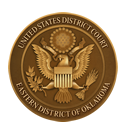2022 Federal Rule Changes
A summary of the operational impact of amendments to select Federal Rules of Civil and Criminal Procedure is listed below. A complete set of the amendments is available here.
Civil Rule 7.1 Disclosure Statement
Rule 7.1(a)(1)
A nongovernmental corporate party or nongovernmental corporation that seeks to intervene must file a statement identifying any parent corporation and any publicly held corporation owning 10% or more of its stock or state that there is no such corporation.
Rule 7.1(a)(2) and 7.1(b)(1)
In an action in which jurisdiction is based on diversity under 28 U.S.C. §1332(a), a party or intervenor must file a disclosure statement. The statement must name and identify the citizenship of every individual or entity whose citizenship is attributed to that party or intervenor when the action is filed, removed to federal court, and when any later event that occurs that could affect the court’s jurisdiction. A party, intervenor, or proposed intervenor must file the disclosure statement with its first appearance, pleading, petition, motion, response, or other request addressed to the court.
The Eastern District of Arkansas has created a new filing event in CM/ECF—Diversity Disclosure Statement—for filing the citizenship disclosure statement.
Criminal Rule 16 Discovery and Inspection
Rule 16(a)(1)(G)(ii) and (b)(1)(C)(ii)
The court must set a time for the government and defendant to disclose expert witnesses. The time must be sufficiently before trial to provide a fair opportunity for the government and defendant to meet the opposing party’s evidence.
New Supplemental Rules for Social Security Actions under 42 U.S.C. §405(g)
Rule 1—Applicability.
These rules govern an action under 42 U.S.C. § 405(g) for review on the record of a final decision of the Commissioner that presents only an individual claim. The Federal Rules of Civil Procedure also apply, except to the extent that they are inconsistent with these rules.
Rule 2—Complaint.
An action for review is commenced by filing a complaint with the court. The complaint must state that the action is brought under §405(g); identify the final decision to be reviewed, including any identifying designation provided by the Commissioner with the final decision; state the name and county of the residence for whom benefits are claimed; name the person on whose wage record benefits are claimed; and state the types of benefits claimed. The complaint may include a short and plain statement of the grounds for relief.
Rule 3—Service.
The court must notify the Commissioner of the commencement of the action by transmitting a Notice of Electronic Filing to the appropriate office within the Social Security Administration’s Office of General Counsel and to the U.S. Attorney for the district where the action is filed. The plaintiff need not serve a summons and complaint under Civil Rule 4.
Rule 4—Answer; Motions; Time.
An answer, or motion under Civil Rule 12, must be served on the plaintiff or made within 60 days after notice of the action is given under Rule 3. The answer may be limited to a certified copy of the administrative record, and to any affirmative defenses under Civil Rule 8(c). Civil Rule 8(b) does not apply.
Rule 5—Presenting the Action for Decision.
The action is presented for decision by the parties’ briefs. A brief must support assertions of fact by citations to particular parts of the record.
Rule 6—Plaintiff’s Brief.
The plaintiff must file and serve on the Commissioner a brief for the requested relief within 30 days after the answer is filed or 30 days after an entry of an order disposing of the last remaining motion filed under Rule 4(c), whichever is later.
Rule 7—Commissioner’s Brief.
The Commissioner must file a brief and serve it on the plaintiff within 30 days after service of the plaintiff’s brief.
Rule 8—Reply Brief.
The plaintiff may file a reply brief within 14 days after service of the Commissioner’s brief.
